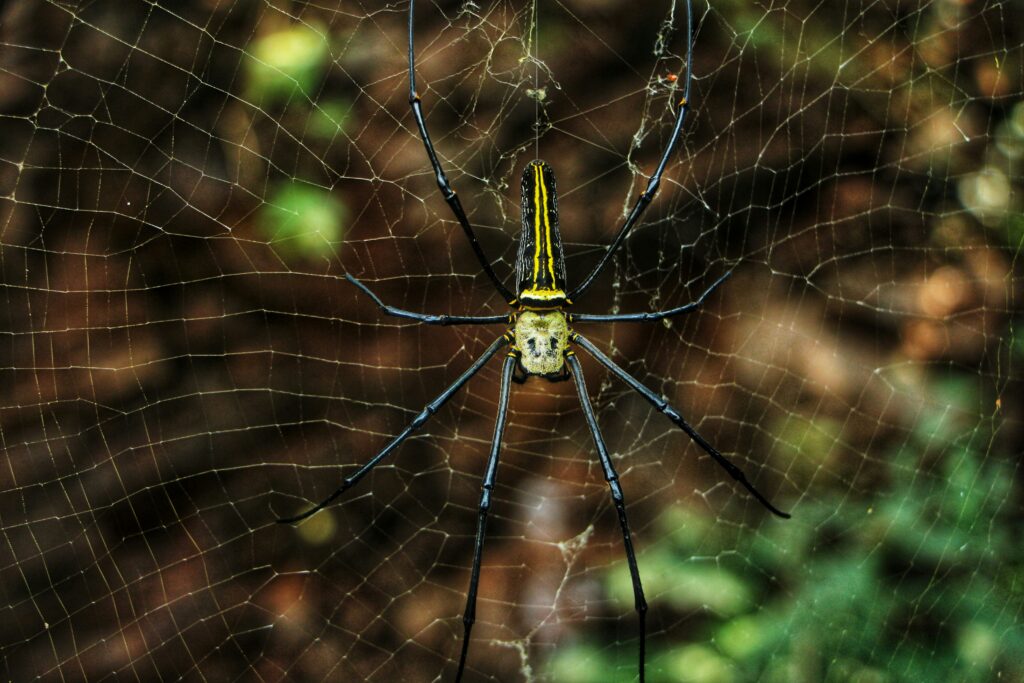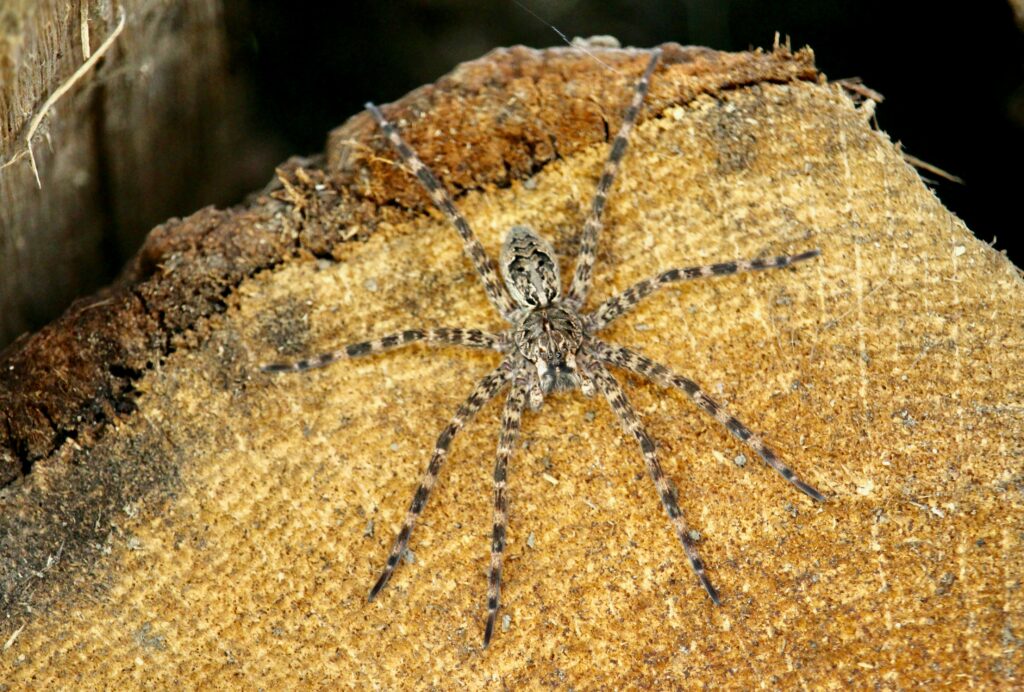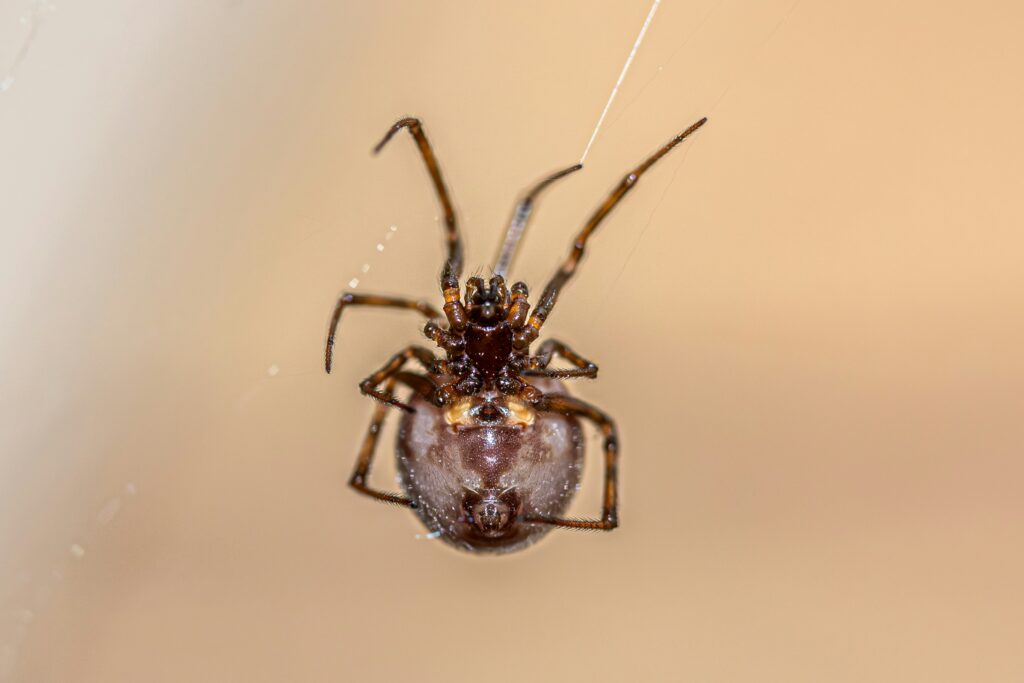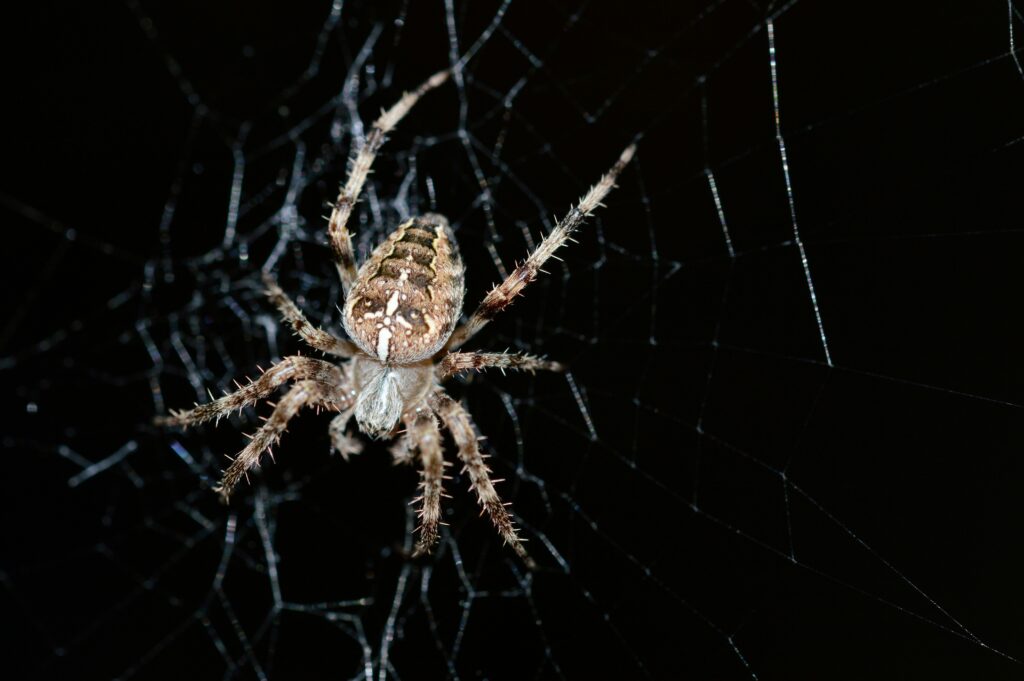In the vast tapestry of Earth’s creatures, few evoke such primal fear as spiders. While most arachnids pose little threat to humans, certain species pack venom potent enough to cause serious harm or death. This ranking explores the world’s most venomous spiders based on their toxicity – the chemical potency of their venom rather than total fatalities caused. Understanding these creatures isn’t just about satisfying morbid curiosity; it provides valuable knowledge for medical professionals, researchers, and anyone living in regions where these spiders exist. From microscopic fangs delivering neurotoxins to the bizarre symptoms their venoms produce, these eight-legged predators remind us of nature’s complex and sometimes dangerous chemical arsenal.
Understanding Spider Venom and Toxicity

Spider venom is a complex cocktail of proteins, peptides, and other compounds, specifically evolved to immobilize prey and aid in digestion. Toxicity refers to how potent these chemical compounds are when introduced to human tissue – measured by the LD50 value (the amount required to kill 50% of test subjects, typically mice). It’s important to understand that a highly toxic spider isn’t necessarily the most dangerous to humans; factors like venom yield, fang size, aggression level, and proximity to human populations all influence real-world risk. Additionally, spider venoms can be neurotoxic (attacking the nervous system), cytotoxic (destroying tissues), or hemotoxic (affecting blood and circulation), with each type producing distinct symptoms and complications in victims.
Brazilian Wandering Spider (Phoneutria spp.)

The Brazilian wandering spider tops most toxicity lists with venom containing a potent neurotoxin called PhTx3. This compound blocks calcium ion channels in the nervous system, leading to intense pain, breathing difficulties, and potentially fatal complications. Unlike many spiders that build webs, these aggressive nocturnal hunters actively roam the forest floor in search of prey, earning their “wandering” moniker. Most notably, their venom can cause priapism in males – painful, prolonged erections lasting hours – a symptom that has ironically led medical researchers to study the venom for potential erectile dysfunction treatments. With leg spans reaching up to 7 inches and known for defensive behavior rather than retreat when threatened, these spiders cause several serious envenomations annually throughout South America, particularly in Brazil.
Sydney Funnel-web Spider (Atrax robustus)

Australia’s notorious Sydney funnel-web spider contains one of the most acutely toxic venoms to humans, with its delta-atracotoxin capable of causing death within 15 minutes if left untreated. What makes these spiders particularly dangerous is their large fangs that can penetrate fingernails and their venom specially adapted to affect primates, despite the spiders having evolved in isolation from humans and other primates. Males are significantly more venomous than females and become more aggressive during mating season when they wander in search of females. Since the introduction of antivenom in 1981, no deaths have been recorded, but before that, the funnel-web was responsible for at least 13 known fatalities in Australia, all occurring within a relatively small geographic range around Sydney.
Six-eyed Sand Spider (Sicarius hahni)

The six-eyed sand spider, native to deserts of southern Africa, possesses a cytolytic venom that may be the most potent of all spiders, though few human envenomations have been documented. Laboratory tests show this venom causes massive tissue destruction and internal bleeding, potentially leading to death as it destroys blood vessel walls and causes blood cells to rupture. These spiders employ a fascinating camouflage technique, covering themselves with sand particles to blend perfectly with their desert surroundings. While extremely dangerous in theory, the six-eyed sand spider’s reclusive nature, remote habitat, and tendency to flee rather than bite has resulted in very few confirmed bites on humans, making them dangerous but rarely encountered killers.
Chilean Recluse Spider (Loxosceles laeta)

The Chilean recluse holds the distinction of being the most venomous of all recluse spiders, with a hemolytic venom containing the enzyme sphingomyelinase D that destroys cell membranes. Its bite can lead to necrotic arachnidism, where tissue around the bite site dies and forms a slowly expanding ulcer that may take months to heal, sometimes requiring skin grafts or amputation in severe cases. Unlike many dangerous spiders, the Chilean recluse is relatively small (2-4cm legspan) and unassuming with a violin-shaped marking on its cephalothorax. Having spread beyond its native South America through global shipping, these spiders now exist in North America, Europe, and parts of Asia, often living undetected in human dwellings for generations, making their presence a significant public health concern in affected regions.
Black Widow Spiders (Latrodectus spp.)

Black widow spiders, identified by the distinctive red hourglass marking on their abdomens, produce venom containing alpha-latrotoxin, a neurotoxin that triggers massive release of neurotransmitters, causing excruciating muscle cramps and spasms throughout the body. Despite their small size (1.5 inches legspan), their venom is reported to be 15 times more potent than a rattlesnake’s by volume, though they inject much smaller amounts. These spiders are found on every continent except Antarctica, with the North American species (Latrodectus mactans) being among the most recognized and feared. Contrary to popular belief, female black widows rarely consume their mates, doing so primarily when food is scarce, and modern medical care means deaths from their bites are now extremely rare despite thousands of reported bites annually worldwide.
Brown Recluse Spider (Loxosceles reclusa)

The brown recluse spider produces a necrotic venom containing sphingomyelinase D that destroys surrounding tissues, creating a characteristic “volcano lesion” with a red center surrounded by white and blue rings that may expand over days or weeks. Though less potent than its Chilean cousin, the brown recluse is significant due to its widespread presence throughout the central and southern United States, where it frequently comes into contact with humans while hiding in clothes, shoes, and bedding. Most bites heal without intervention, but approximately 10% develop severe necrosis, and rare systemic reactions can lead to hemolysis, kidney failure, and in exceptional cases, death. Identification is often challenging but important, as the spider has a distinctive violin-shaped marking on its back and precisely six eyes arranged in three pairs (unlike most spiders which have eight eyes).
Yellow Sac Spider (Cheiracanthium spp.)

The yellow sac spider possesses a cytotoxic venom that, while less devastating than others on this list, contains the enzyme phospholipase A2 which can cause significant local tissue damage. These pale-colored spiders measure only about 5-10mm in body length but are responsible for more documented bites than almost any other spider species due to their habit of crawling into beds and clothing, plus their tendency to bite multiple times when trapped against human skin. Found worldwide and adapted to human dwellings, yellow sac spiders build small silk “sacs” in ceiling corners or foliage where they hide during daylight hours. Interestingly, they were once so attracted to the smell of certain plastics in early Mazda vehicles that the company issued a recall after the spiders built webs in fuel system vent lines, creating potential fire hazards.
Redback Spider (Latrodectus hasselti)

Australia’s redback spider, a close relative of the black widow, produces a potent neurotoxic venom containing alpha-latrotoxin that can cause the “redback syndrome” – intense local pain followed by sweating, muscle weakness, and nausea that may persist for days or weeks. Unlike many venomous spiders, redbacks display sexual dimorphism with females being significantly larger (1 cm body length) and more dangerous than the tiny males, identified by their distinctive red stripe on a glossy black abdomen. Their sedentary nature and preference for building webs in human structures like outdoor toilets, garden furniture, and playground equipment has led to thousands of bites annually in Australia. Since the introduction of antivenom in 1956, no deaths have been recorded, though before that, the redback was responsible for at least 14 documented human fatalities.
Mouse Spider (Missulena spp.)

The mouse spider produces venom similar in composition and effects to that of the funnel-web spider, containing powerful neurotoxins that can cause severe symptoms including intense pain, facial spasms, salivation, and in extreme cases, respiratory compromise. Native to Australia, these spiders get their name not from their prey preference but from their burrowing habit resembling mice, creating deep vertical burrows with tight-fitting trapdoors from which they ambush passing prey. With their massive fangs and glossy appearance (males often sporting bright red jaws against black bodies), mouse spiders are frequently mistaken for funnel-webs, leading to appropriate medical caution when bites occur. Although potentially dangerous, these spiders are generally reluctant to bite and often deliver dry bites (without venom), resulting in few severe envenomations despite their fearsome capability.
Hobo Spider (Eratigena agrestis)

The hobo spider has been the subject of significant scientific controversy regarding its venom toxicity, with earlier research suggesting it produced necrotic lesions similar to brown recluse spiders. More recent studies have largely debunked these claims, finding little evidence that hobo spider venom causes significant tissue death in humans, leading the CDC to remove it from its list of venomous species of concern. Native to Europe but introduced to the Pacific Northwest of North America in the 1980s, these spiders build funnel-shaped webs in dark recesses, often around human habitations. Despite the scientific reassessment of their danger level, hobo spiders remain feared by many, demonstrating how scientific understanding of arachnid toxicity continues to evolve with better research methodologies and more comprehensive case studies.
Tarantulas and Their Unique Venom Profiles

Despite their intimidating appearance and frequent portrayal as deadly in popular media, most tarantula species possess venom far less toxic to humans than the spiders previously discussed. However, certain species like the Indian ornamental tarantula (Poecilotheria regalis) produce complex venoms that can cause significant pain, muscle cramping, and in rare cases, more serious symptoms like heart palpitations. Rather than lethal toxicity, many tarantulas have evolved unique defensive mechanisms like urticating hairs – barbed bristles they can flick into predators’ eyes and mucous membranes, causing intense irritation. The sheer diversity of tarantula species (over 1,000 identified) has made them valuable research subjects for pain medication development, with scientists isolating peptides that selectively block pain receptors without affecting other neural functions. Despite their fearsome reputation, no confirmed human fatalities have been attributed to tarantula bites in recorded medical history.
Medical Treatment and Antivenom Development

The development of antivenoms has dramatically reduced fatalities from the world’s most dangerous spider bites, with Australia’s Commonwealth Serum Laboratories pioneering many of these life-saving treatments. Antivenom production typically involves injecting diluted spider venom into animals (often horses) who produce antibodies that are then harvested, purified, and prepared for human use in emergency situations. Treatment approaches vary by spider species and symptom presentation, with some requiring specific antivenoms while others respond to supportive care like pain management, wound care, and monitoring for systemic effects. The geographic distribution of venomous spiders presents global challenges, as antivenom may be readily available in developed countries but difficult to access in remote or underserved regions where some of these spiders naturally occur. Modern medical advances include research into recombinant antivenoms that could be produced without animal involvement and broad-spectrum treatments effective against multiple species’ venoms.
Misconceptions and Spider Conservation

Despite their fearsome reputations, even the most venomous spiders rarely bite humans unprovoked, generally doing so only when threatened or accidentally pressed against skin. Arachnophobia and media sensationalism have contributed to widespread misconceptions about spider dangers, leading to unnecessary killing of beneficial species that control insect populations. Most spider species worldwide (over 48,000 identified) pose absolutely no threat to humans, yet many face habitat destruction and climate-related pressures that threaten their survival. Conservation efforts for spiders often face public resistance due to innate fears, though education about their ecological importance is gradually shifting perspectives. Understanding the actual risk levels associated with various spider species – separating truly dangerous ones from harmless lookalikes – represents an important aspect of both public health communication and biodiversity conservation efforts worldwide.
In conclusion, while the spiders featured in this ranking possess truly potent venoms capable of causing serious harm or death, the actual risk they pose to humans is often mitigated by their behavior, habitat preferences, and the availability of medical treatment. Modern antivenom development has transformed once-deadly encounters into survivable medical emergencies in most cases. These remarkable arachnids have evolved their toxic arsenals over millions of years primarily to subdue prey or deter predators, not to harm humans. Their presence in ecosystems worldwide serves vital functions in controlling insect populations and contributing to biodiversity. Rather than inspiring only fear, these venomous marvels merit our scientific curiosity and respect as we continue to unravel the complex biochemistry of their venoms – compounds that increasingly show promise for developing new medicines and understanding physiological processes.

